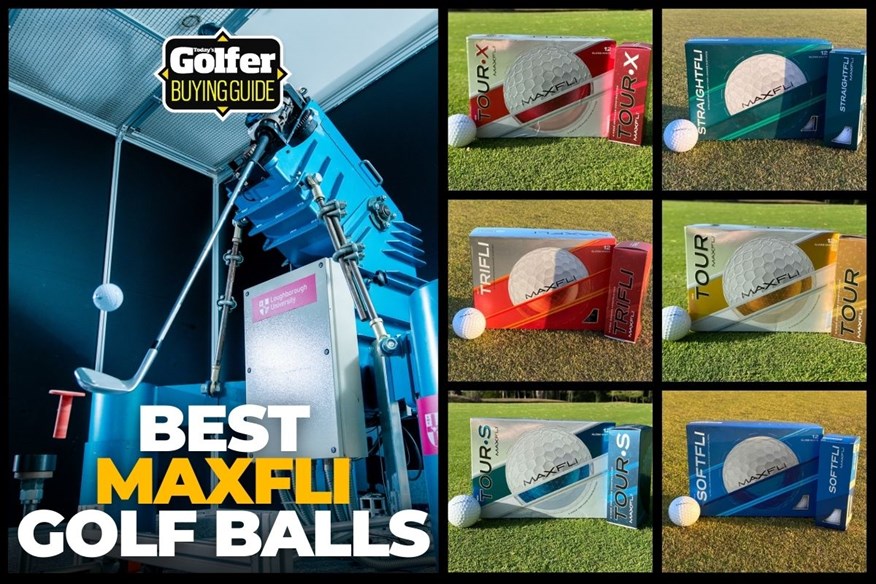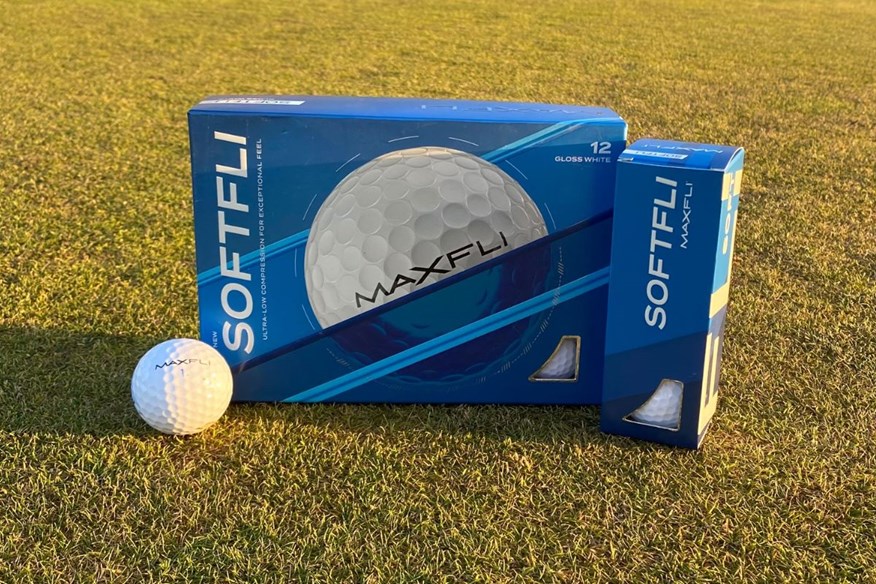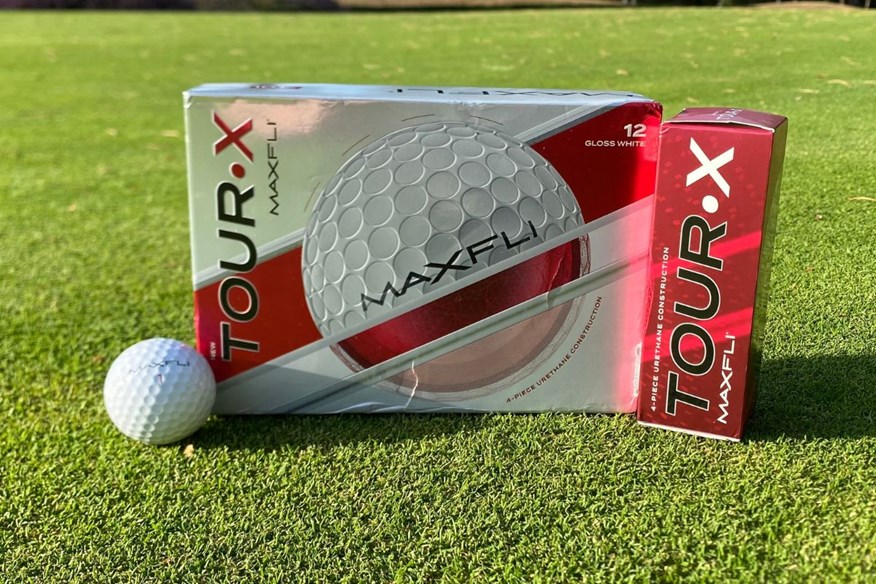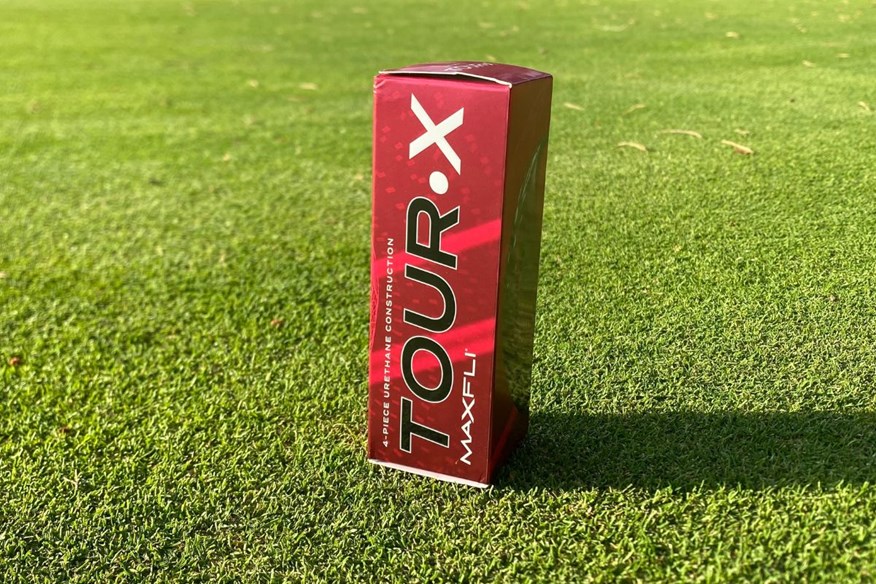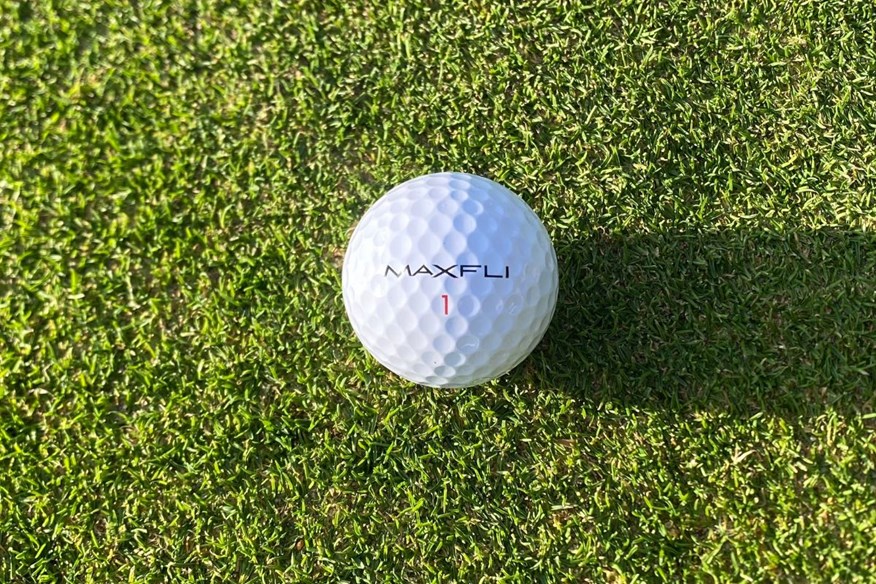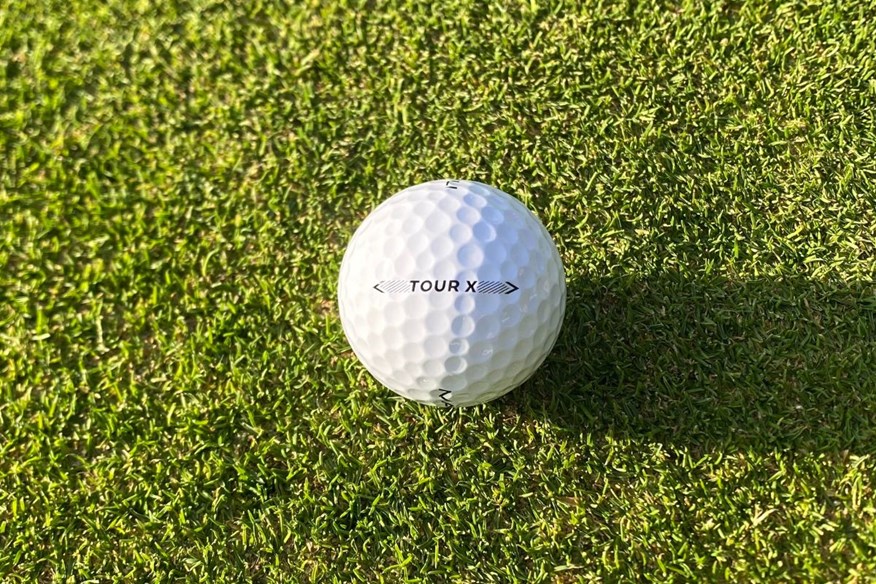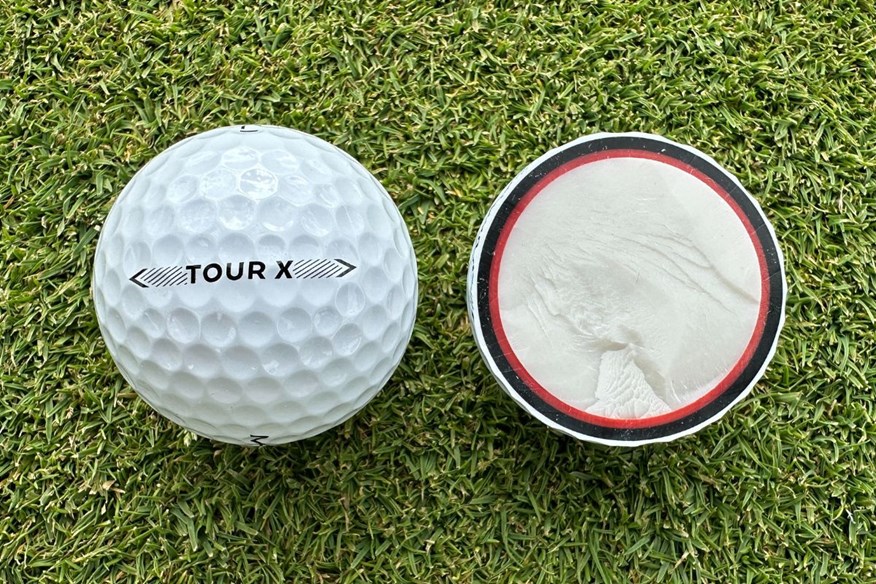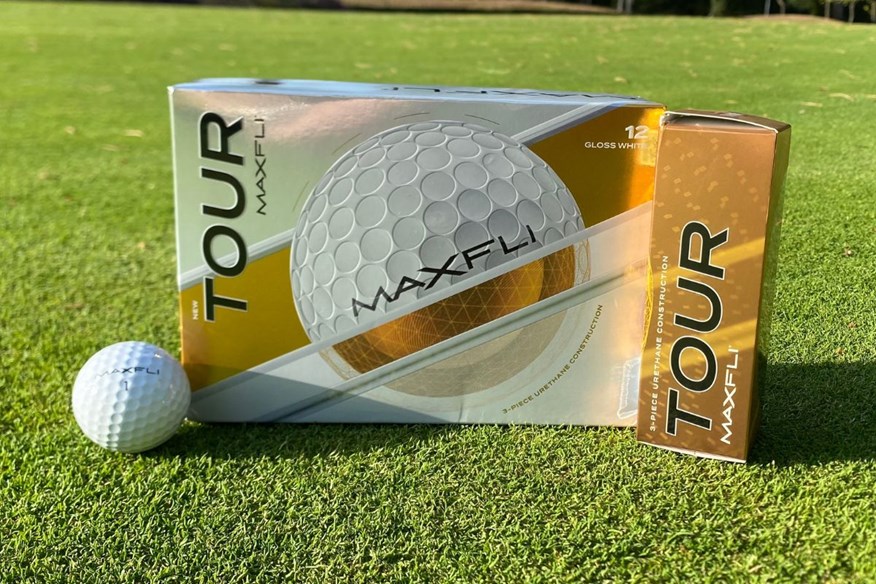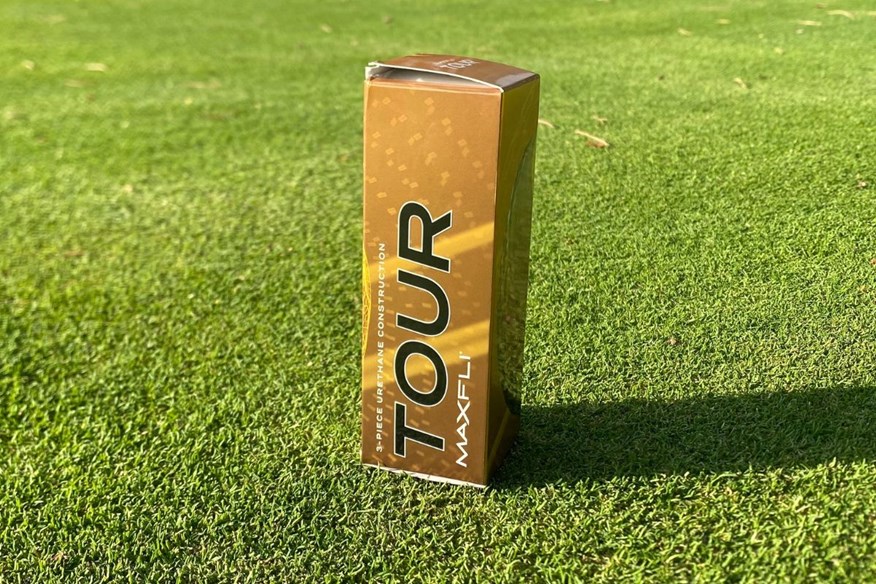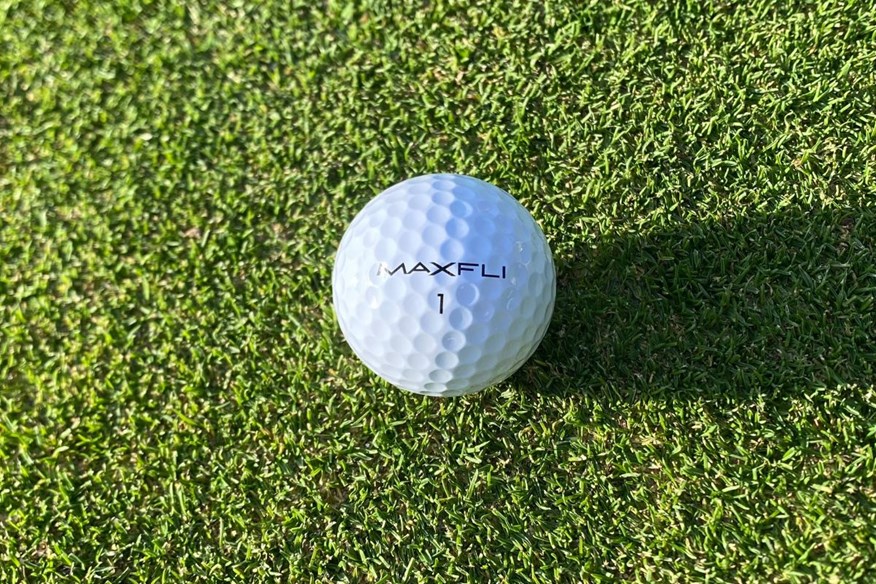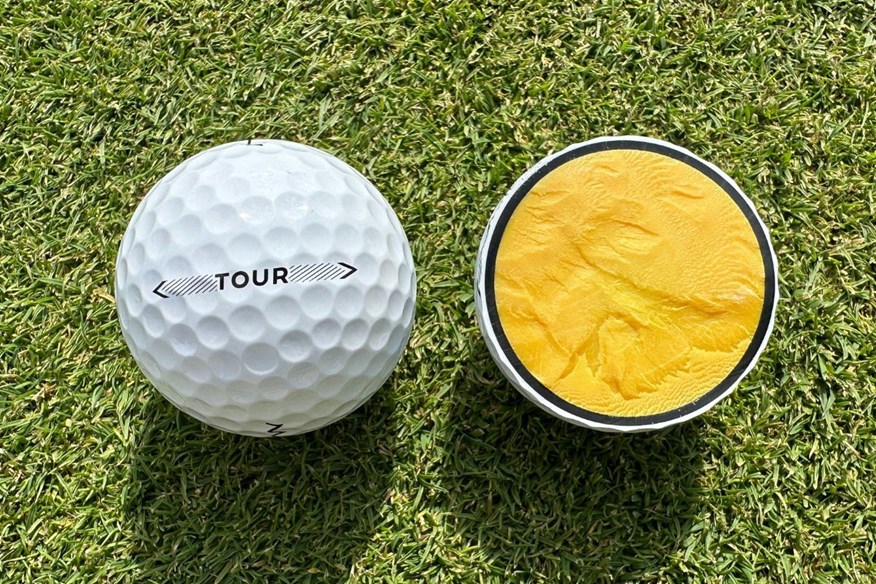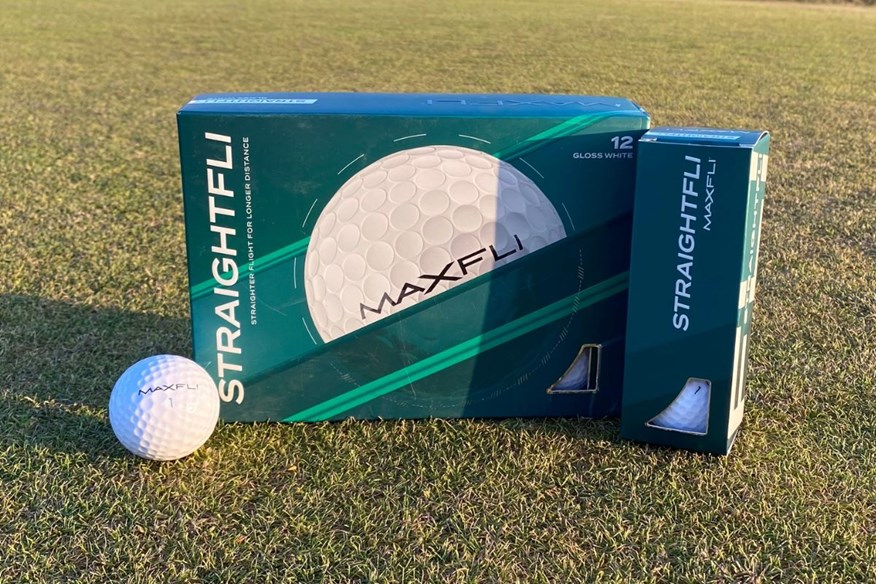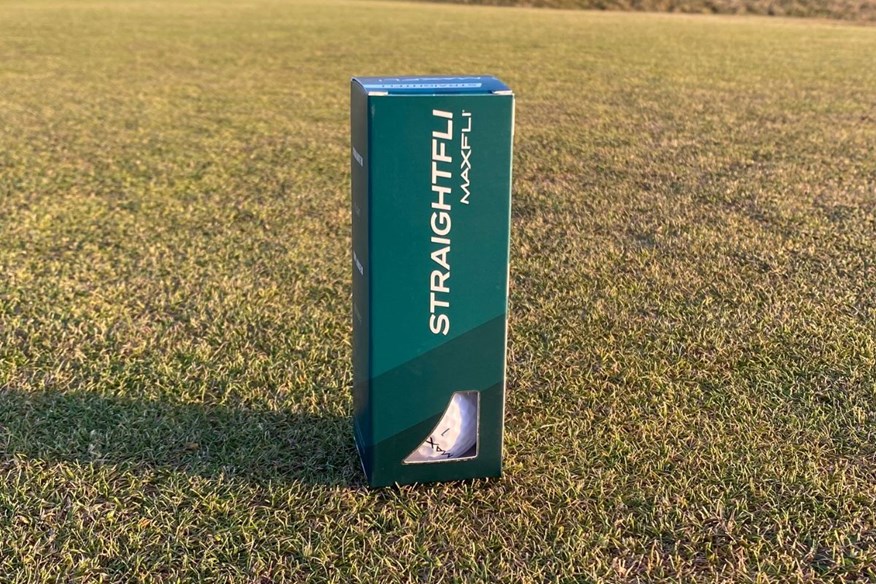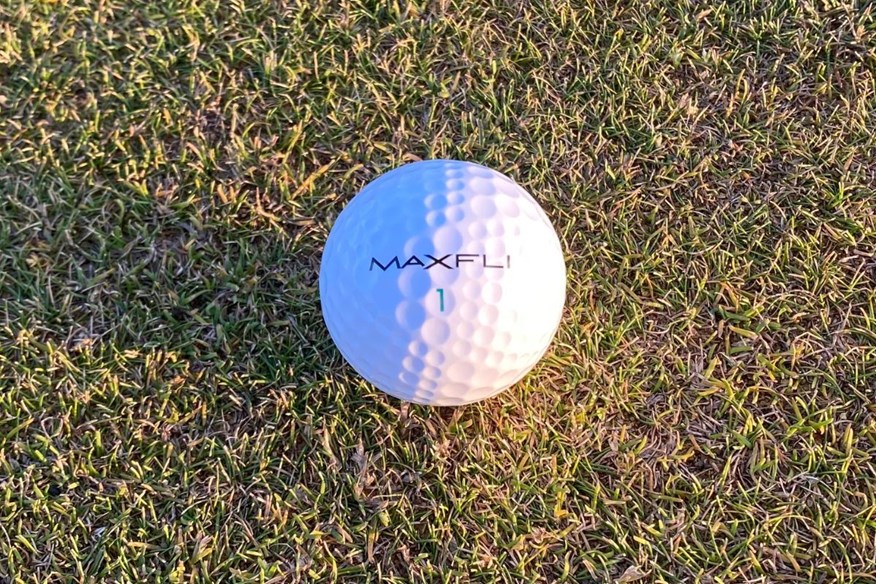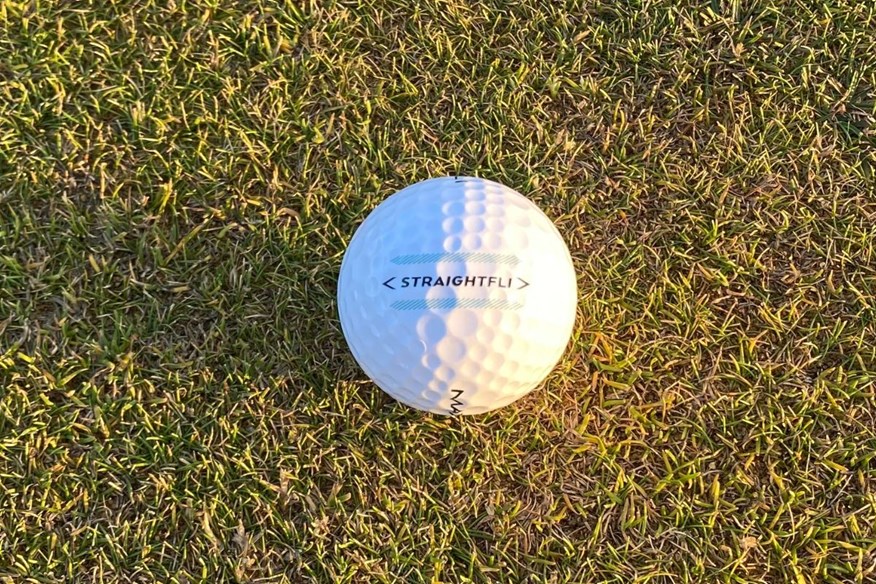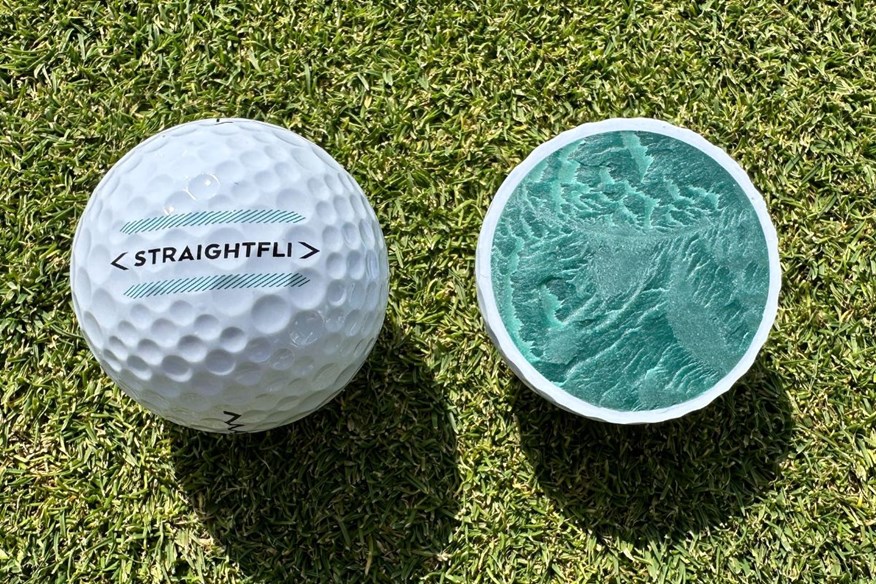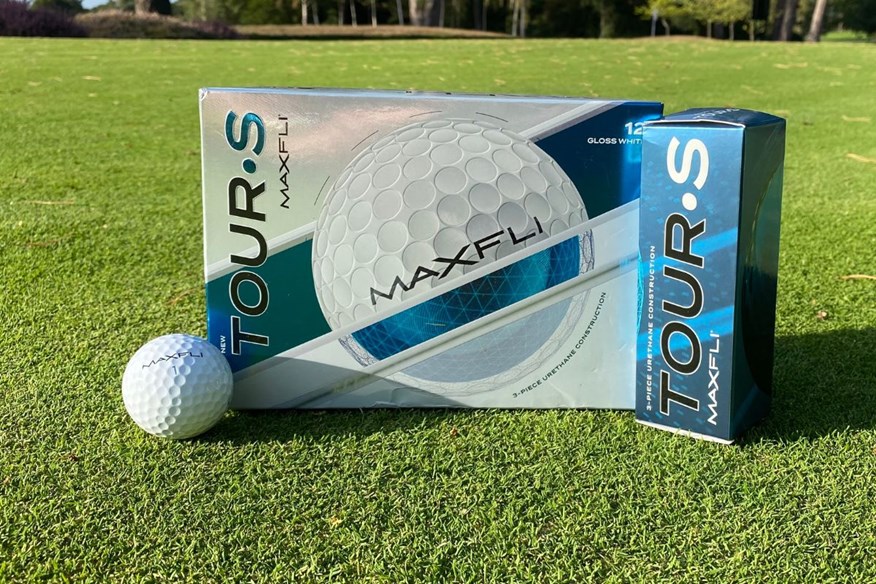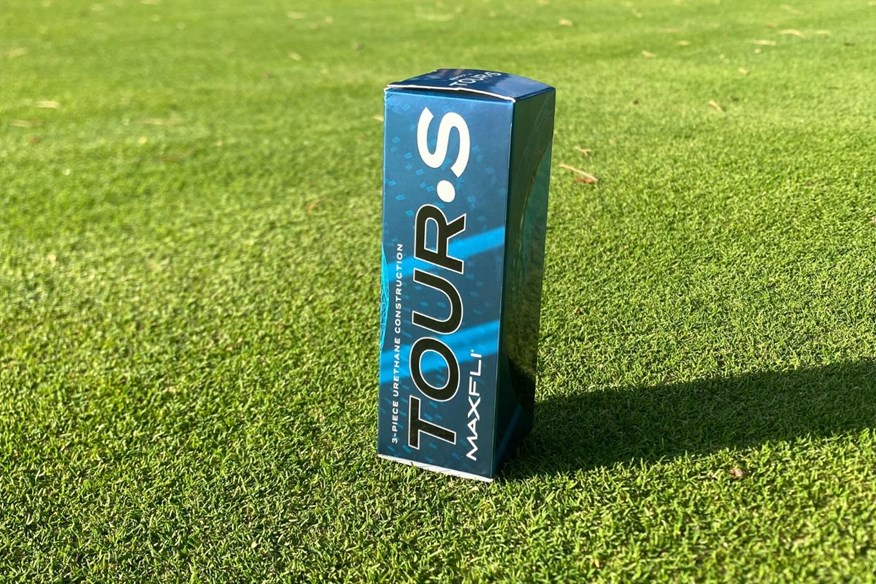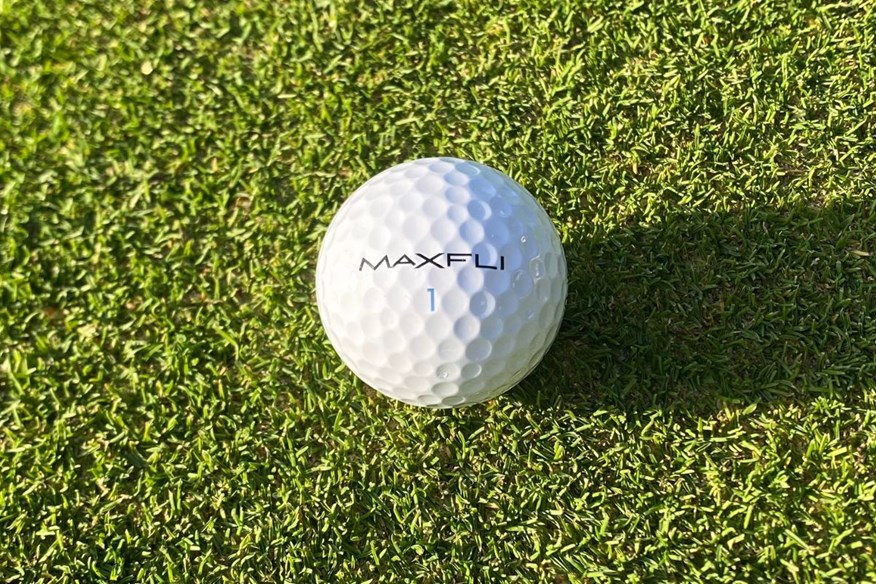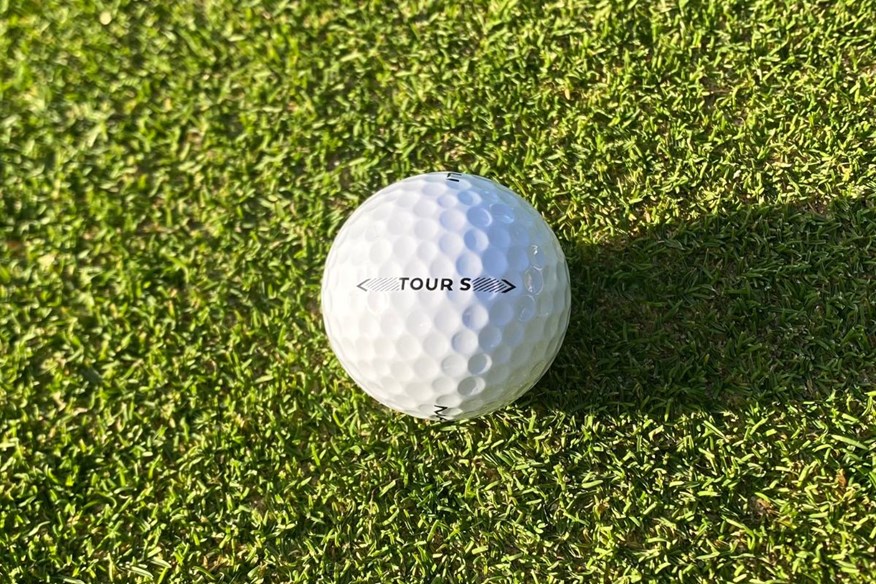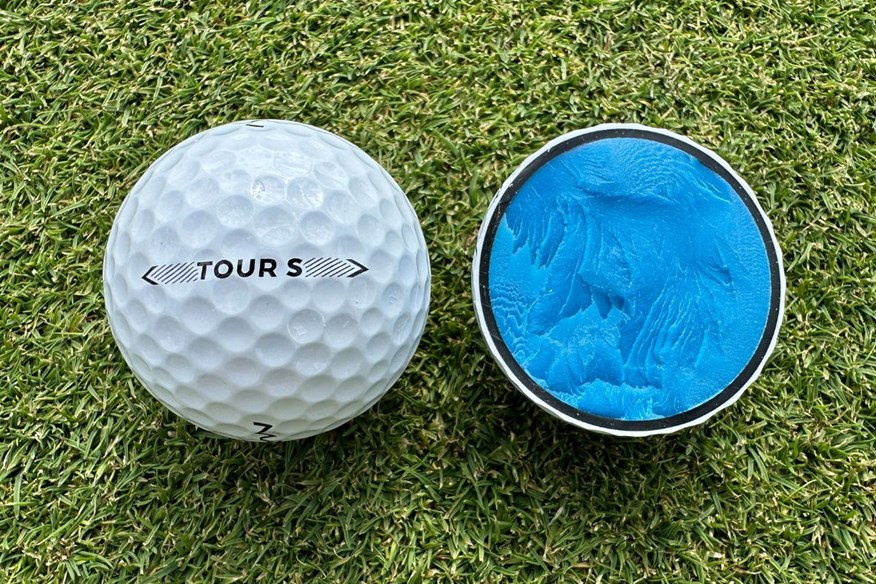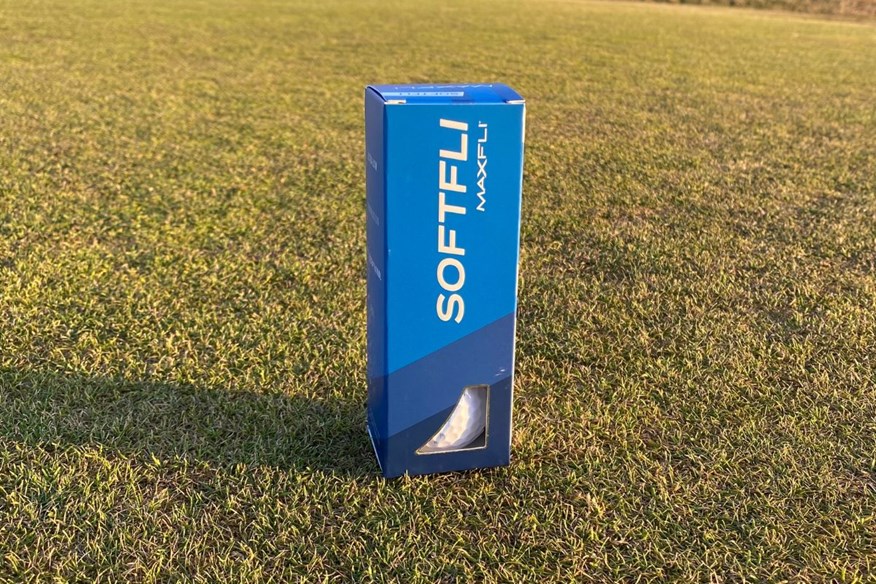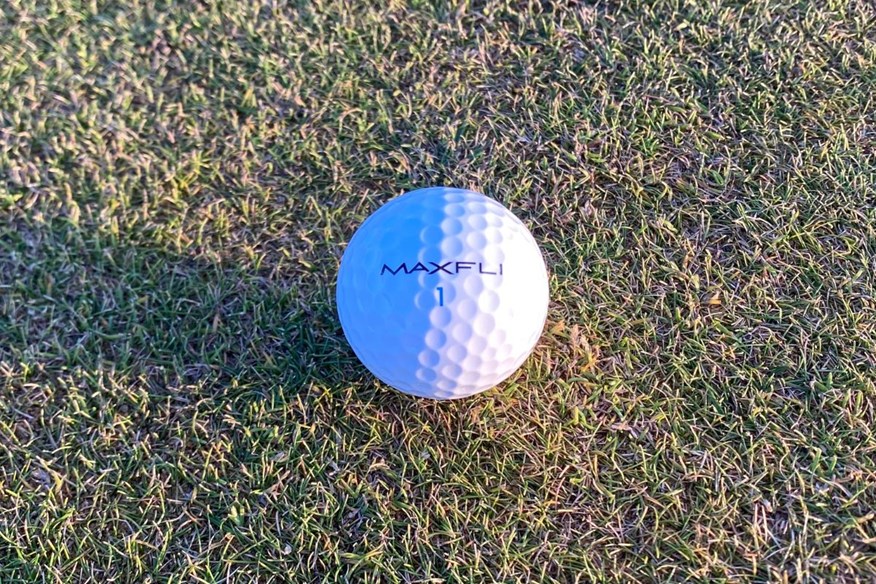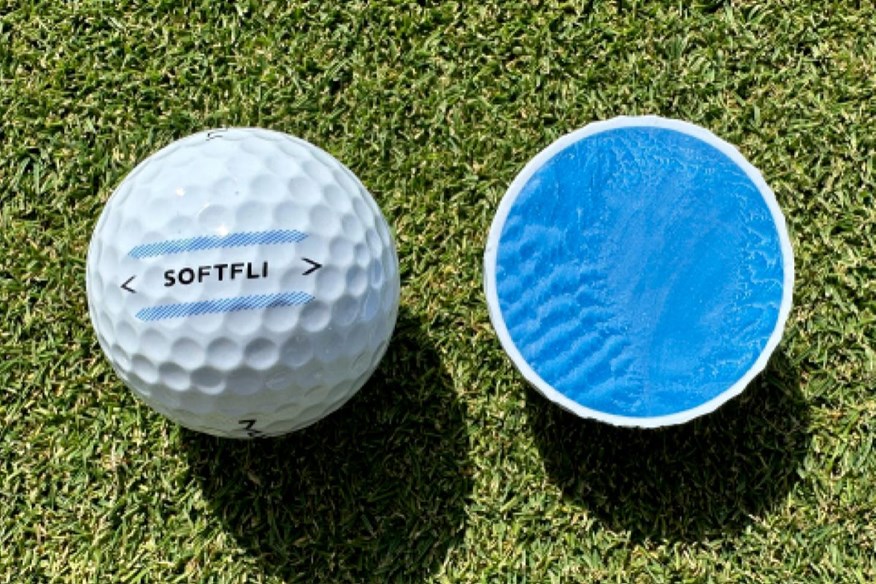Best Maxfli golf balls 2025: All models tested on an R&D robot and on-course
Published:
Click here to find out how we conducted our 2025 golf balls test
From Tour-proven models to two-piece golf balls, we’ve tested every Maxfli golf ball on an R&D robot and on the golf course to help you find the right model for your game
Jump to:
Maxfli haven’t always been in the conversation for the best golf balls, but they most certainly are now. In addition to having Tour approval, Maxfli’s reputation has grown significantly in the amateur game.
In 2025, Ben Griffin became the first golfer to win on Tour using a Maxfli golf ball since Shaun Michael at the 2003 PGA Championship. Griffin is also set to become the first golfer to use a Maxfli in the Ryder Cup when he tees it up for Team USA at Bethpage.
The American uses the Maxfli Tour X, and fellow compatriot Lexi Thompson is another Maxfli user, who elects to play with the Maxfli Tour. That is two models from Maxfli’s range being used by pros, but with six available, which model is right for you?
To help you in your search for the right golf ball, we carried out our biggest ever golf ball robot test – 62 models from 13 manufacturers – including all six models offered by Maxfli. As well as testing on the robot, every golf ball has been tested on-course to provide you with a personal verdict. Click the links below to see how we completed this year’s robot test and to find out exactly how we test golf equipment.
- 2025 golf ball robot test: 62 golf balls, 2,232 shots, 50,000 data points… find out what’s No.1 for you
- How we test golf equipment at Today’s Golfer
Maxfli have a line-up of six golf balls, which means they have an option for every golfer. From premium golf balls to cheap golf balls, Maxfli have an option or two for you to consider. If you’re looking for one of the best value golf balls, there’s a case to be made for every Maxfli model. They tick almost every box, and there’s sure to be at least one model that suits your wants and needs.
Best Maxfli golf balls 2025: At a glance
It’s very clear to see why Maxfli are growing in popularity, based on their golf balls’ performance and price. We’ve seen firsthand in our robot and on-course testing that Maxfli are capable of challenging the best four-piece golf balls and the best two-piece golf balls.
Now it’s your turn to give Maxfli a go and discover which model is right for your game. Once you’ve looked through the best Maxfli golf balls, if you’re still unsure which model will work best for you, read through our detailed buying guide and FAQs section.
Best Maxfli golf balls 2025
Maxfli's fastest and longest golf ball
Saying a golf ball is average might sound like a negative, but it's actually more of a compliment than you might initially think. The Maxfli Tour X has no areas where it massively excels, but also no areas where it lacks performance.
Maxfli Tour X didn't win any awards in our test, but nothing jumps out to put you off this golf ball. At all three driver swing speeds, the biggest distance between this golf ball and the best is 3.3 yards and 1.1mph ball speed - at 114mph.
With approach play and short game performance, it's a very similar story. The Tour X isn't setting any standards for spin, but it's up there with the higher-spinning golf balls.
It's difficult to criticise the Maxfli Tour X because it's such a solid golf ball from tee to green. Are there better options out there? 100 percent, but for the price, and with Tour approval, this is a brilliant four-piece Tour-level golf ball.
On-course verdict
I'm a massive fan of the Maxfli Tour X. I think it plays very honest and true to how a four-piece golf ball should play. The Tour X doesn't struggle in generating spin anywhere on the golf course, which is something I like, but some of you might not.
Off the tee and around the green, the Tour X is very easy to control because of its high-spinning nature. I don't think spin hinders the performance of this ball on-course, but for some of you who don't require a high-spin model, the Tour X might be a bit too much.
My favorite aspect of the Tour X is its firmness. This is one of the firmer golf balls on the market, and I absolutely love that! You get instant feedback from every shot. I remember giving a sleeve to my playing partner, and the first time he hit one, he instantly looked to me because it produced a sound and feel he'd never encountered before.
Based on sound, feel, and spin, this is a very genuine four-piece golf ball that offers great tee-to-green performance.
Pros
- Consistent golf ball in every area
- Amazing value
- Great feel, feedback, and response
Cons
- Not a special golf ball that's going to blow you away
| Carry distance (yds) | Driver 114mph - 272.3 | Driver 93mph - 209.8 | Driver 78mph - 161.2 | 7-iron - 156.2 |
| Ball speed (mph) | Driver 114mph - 164 | Driver 93mph - 134.4 | Driver 78mph - 113.2 | 7-iron - 109.1 |
| Backspin (rpm) | Driver 114mph - 2,828 | Driver 93mph - 2,860 | Driver 78mph - 2,701 | 7-iron - 4,694 | Pitch - 6,028 |
| Launch angle (°) | Driver 114mph - 11 | Driver 93mph - 12.7 | Driver 78mph - 13.7 | 7-iron - 20.9 | Pitch - 30.5 |
| Descent angle (°) | Driver 114mph - 38.1 | Driver 93mph - 33.2 | Driver 78mph - 28.1 | 7-iron - 45.1 | Pitch - 35.7 |
| Peak height (yds) | Driver 114mph - 33.1 | Driver 93mph - 23.1 | Driver 78mph - 15.7 | 7-iron - 29.6 | Pitch - 6.7 |
| Compression (psi) | 117 |
- Cast urethane cover
- Polyhedron 336 dimple design
- Dual Ionomer mantle
- High energy core
- 4-Piece construction
- Available in white and yellow
Maxfli's fastest 3-piece golf ball
The Maxfli Tour is one of three golf balls in Maxfli's Tour line-up, and it's the middle-ground golf ball of the three in the range. The four-piece Tour X is the higher-spinning model, and the three-piece Tour S is the lower-spinning model. Our test results show this is exactly where the Tour sits.
For short game performance, the Tour is right around the test average with 5,634rpm, placing it between the Tour X and Tour S. It's exactly the same story with approach play performance, too. However, the Tour is below the test average by 100rpm backspin (4,397rpm).
At 78mph and 93mph, the Tour sits directly between the Tour X and Tour S for spin, and that makes it a slightly longer and faster golf ball compared to the Tour S at all three swing speeds, but at 114mph, it spins marginally more than the Tour X (2rpm). However, that's not enough to make it faster or longer than the Tour X.
The Maxfli Tour is what I call a goldilocks golf ball because it's not too high-spinning or too low-spinning, it's right in the middle. For that reason, if you don't need help getting the ball to spin or stopping the ball from spinning too much, the Tour is a brilliant option.
On-course verdict
I find it difficult to complain and praise the Maxfli Tour because it's a very average golf ball. That might not sound particularly impressive, but it's average in the sense that it does everything you expect, and everything you want.
It's an uninspiring golf ball because it doesn't blow you away with its grab when firing at pins, and neither does it produce mind-blowing distance off the tee.
What does impress me with the Tour is that it sits directly between the Tour X and Tour S on-course. With launch, spin, distance, feel... you name it, it's right in the middle of the other two Tour golf balls.
The biggest issue I had with the Tour is that it scuffed quite easily, but that could be down to where I was placing the golf ball, although I'm pretty sure I never hit a cart path.
Pros
- Delivers on its intended performance
- A perfect middle-ground between the Tour X and Tour S
- Consistent and reliable
Cons
- Not the most durable urethane cover
| Carry distance (yds) | Driver 114mph - 269.3 | Driver 93mph - 208.6 | Driver 78mph - 160.8 | 7-iron - 157.1 |
| Ball speed (mph) | Driver 114mph - 162.6 | Driver 93mph - 133.6 | Driver 78mph - 113 | 7-iron - 108.7 |
| Backspin (rpm) | Driver 114mph - 2,830 | Driver 93mph - 2,705 | Driver 78mph - 2,554 | 7-iron - 4,397 | Pitch - 5,634 |
| Launch angle (°) | Driver 114mph - 11 | Driver 93mph - 12.9 | Driver 78mph - 13.8 | 7-iron - 21.2 | Pitch - 31.3 |
| Descent angle (°) | Driver 114mph - 37.8 | Driver 93mph - 32.5 | Driver 78mph - 27.6 | 7-iron - 44.7 | Pitch - 36.9 |
| Peak height (yds) | Driver 114mph - 32.4 | Driver 93mph - 22.6 | Driver 78mph - 15.5 | 7-iron - 29.4 | Pitch - 7.2 |
| Compression (psi) | 100 |
- Cast urethane cover
- Polyhedron 318 dimple design
- High-speed mantle
- 3-Piece construction
- Available in white and yellow
Silver medal for off-the-tee performance
The Maxfli StraightFli is the second-best golf ball off the tee in the two-piece golf ball category.
At 78mph, this is the longest golf ball (161.3yds) and second-fastest (113.1mph). At the quickest swing speed, the StraightFli is sixth-longest (270yds) and sixth-fastest (162.6mph). But, 93mph is where this model performs best, being the longest (210yds) and fastest (134.1mph). For its performance at this swing speed, the StraightFli won the bronze medal for tee to green performance.
The StraightFli is a very solid golf ball in approach play. Backspin (4,530rpm) is fourth-highest, descent angle (44.9°) is fourth-steepest, and carry distance (158yds) is eighth-longest.
The only area where the StraightFli doesn't perform well is in short game performance. The StraightFli is one of only two golf balls to spin below 5,200rpm, and it's the second-lowest spinning golf ball with 3,742rpm.
Greenside performance obviously isn't ideal, but off the tee and from the fairway, the StraightFli is definitely a two-piece golf ball to consider.
On course verdict
I've not had much playing time with the Maxfli StraightFli, but on the couple of occasions I have played with this golf ball, I've not really noticed it fly much straighter than other golf balls.
However, what I have noticed is that its distance is competitive. That stacks up with how it performed in our robot test.
The distance comes from this golf ball's low-spinning nature. For some golfers, that will make this model appealing, but for me, it's a reason not to put it in play.
I'm not overly keen on the feel and sound of the StraightFli. It feels slightly dull, and the sound matched that.
Pros
- Competitive distance
- Good tee-to-green performance
- Amazing value
Cons
- Low greenside spin and control
| Carry distance (yds) | Driver 114mph - 270 | Driver 93mph - 210 | Driver 78mph - 161.3 | 7-iron - 158 |
| Ball speed (mph) | Driver 114mph - 162.6 | Driver 93mph - 134.1 | Driver 78mph - 113.1 | 7-iron - 109.5 |
| Backspin (rpm) | Driver 114mph - 2,764 | Driver 93mph - 2,575 | Driver 78mph - 2,254 | 7-iron - 4,530 | Pitch - 3,742 |
| Launch angle (°) | Driver 114mph - 11.1 | Driver 93mph - 13 | Driver 78mph - 14.3 | 7-iron - 21 | Pitch - 36.5 |
| Descent angle (°) | Driver 114mph - 37.5 | Driver 93mph - 32 | Driver 78mph - 27 | 7-iron - 44.9 | Pitch - 42.8 |
| Peak height (yds) | Driver 114mph - 32.3 | Driver 93mph - 22.5 | Driver 78mph - 15.5 | 7-iron - 29.8 | Pitch - 9.1 |
| Compression (psi) | 102 |
- 20 Percent straighter flight compared to previous generation
- Cube-octahedron dimple design
- Soft Ionomer cover
- 374 dimples
- 2-Piece construction
- Available in white, yellow, green, and orange
- An alternative model is Graffiti
Maxfli's low-spinning 3-piece Tour-level golf ball
If you want to play with a premium Maxfli golf ball and you need to reduce how much spin you generate, the Tour S is the golf ball for you. As the lowest-spinning golf ball in Maxfli's Tour range, the Tour S will potentially appeal to a lot of golfers.
If you genuinely produce too much spin and it's hindering your scores, I would point you in the direction of the Tour S because it's the second-lowest-spinning three-piece Tour-level golf ball (behind the Bridgestone Tour B X) at 114mph, lowest-spinning at 93mph, and sixth-lowest-spinning at 78mph. At all three swing speeds, the Tour S is competitive for distance, but never does enough to really challenge the balls at the top of the leaderboard.
Off the tee, the Tour S might sound like a desirable golf ball, but for approach play, the low-spinning nature of the Tour S might not be as highly appreciated. The Tour S is the lowest-spinning golf ball in the three-piece Tour-level category (4,280rpm), which will hinder this golf ball's ability to hit and hold greens.
Short game performance follows the exact same narrative, as it's the lowest-spinning three-piece Tour-level model, only generating 5,541rpm with the 40-yard pitch shot.
The Tour S should only cross your mind if you generate tons of spin naturally, and it's hurting your scores. If not, then you could easily be frustrated by the Tour S because it will roll out on the greens.
On-course verdict
The Maxfli Tour S isn't a model I would play with often because I prefer having too much spin rather than not enough. However, I have played a couple of rounds with the Tour S because I was intrigued to see if our robot test results translate to the golf course for me, or not.
I can confirm, the Tour S is low-spinning when playing into and around greens. I found the Tour S to be low-spinning throughout my bag, which means when I got hold of one off the tee, it absolutely flew, but I didn't appreciate it scampering through the green from 160 yards out because I don't normally see that happen.
This is the softest Tour golf ball, and you really can feel it. It's more spongy than I would like a golf ball to be, but I imagine that'll please a lot of golfers.
The durability isn't high, but I don't think it's a real negative. I wouldn't reach for the Tour S often, but it's not my type of golf ball. If you want to reduce spin, this is a perfect option.
Pros
- Strong distance on-course
- Soft feeling
- Low-spinning throughout the bag
Cons
- Low spin can harm control
| Carry distance (yds) | Driver 114mph - 269 | Driver 93mph - 208.3 | Driver 78mph - 160.3 | 7-iron - 158 |
| Ball speed (mph) | Driver 114mph - 161.9 | Driver 93mph - 133.5 | Driver 78mph - 112.8 | 7-iron - 108.8 |
| Backspin (rpm) | Driver 114mph - 2,681 | Driver 93mph - 2,551 | Driver 78mph - 2,481 | 7-iron - 4,280 | Pitch - 5,541 |
| Launch angle (°) | Driver 114mph - 11.2 | Driver 93mph - 12.9 | Driver 78mph - 13.9 | 7-iron - 21.3 | Pitch - 31.5 |
| Descent angle (°) | Driver 114mph - 36.8 | Driver 93mph - 31.5 | Driver 78mph - 27.4 | 7-iron - 44.6 | Pitch - 37.2 |
| Peak height (yds) | Driver 114mph - 31.5 | Driver 93mph - 21.9 | Driver 78mph - 15.4 | 7-iron - 29.5 | Pitch - 7.3 |
| Compression (psi) | 94 |
- Cast urethane cover
- Polyhedron 336 dimple design
- High-speed mantle
- Low compression core
- 3-Piece construction
- Available in white and yellow
Bronze medal for short game performance
Best three-piece Maxfli golf ball for short game performance


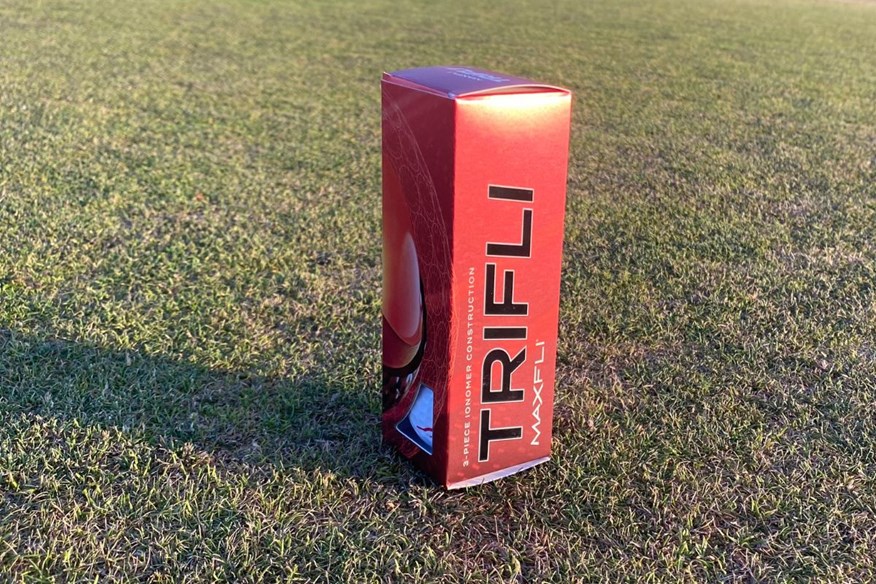

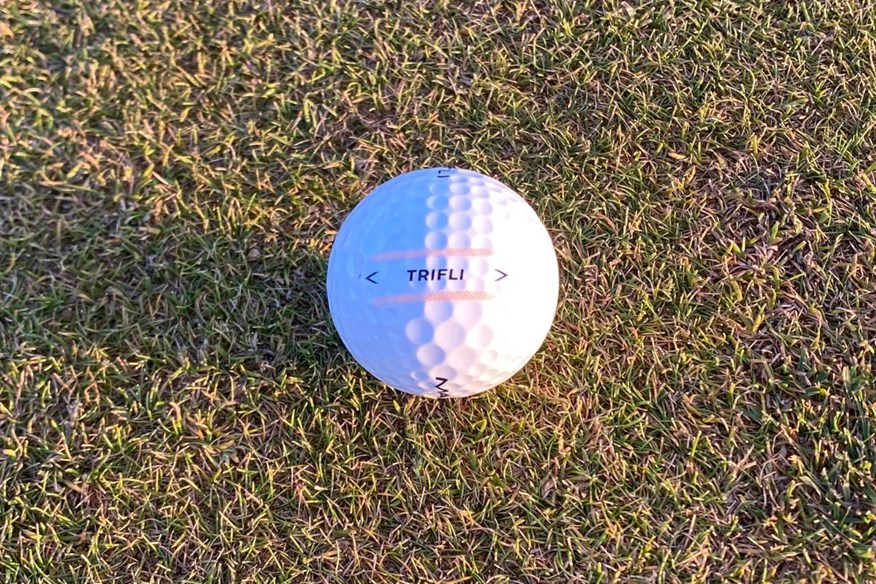
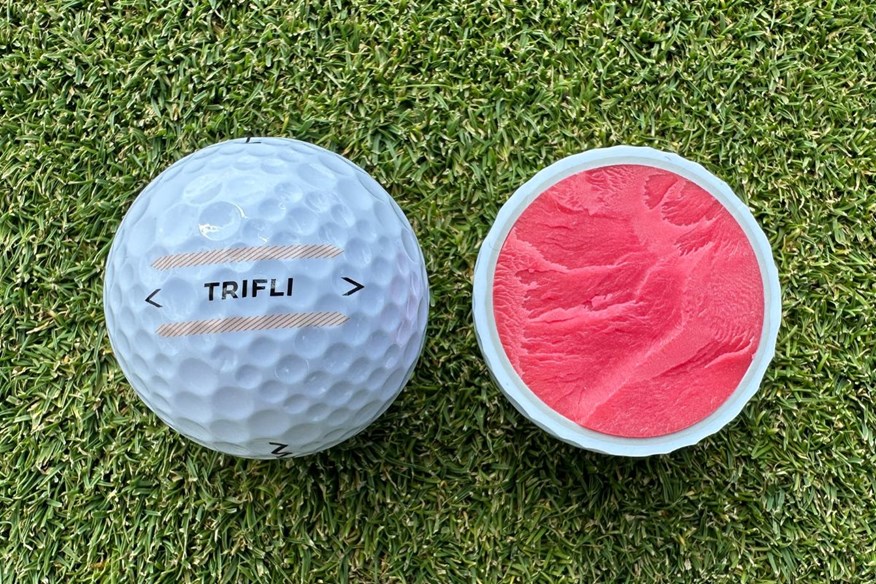
The Maxfli TriFli is a three-piece golf ball with an ionomer cover. Like the Vice Tour (which has a Surlyn cover), it's a low-spinning golf ball in approach play, generating only 3,982rpm, making it the lowest-spinning golf ball in the three-piece club golfer category, and the fourth-lowest overall.
However, just like the Vice Tour, spin ramps back up in short game performance, and the TriFli is the third-highest-spinning golf ball in the three-piece club golfer category (5,831rpm).
There's not too much more to note with the TriFli. Its best performance off the tee comes at 114mph, but it's nothing to get excited about.
The TriFli is the lowest-performing non-two-piece Maxfli golf ball, and considering it's $5 more than Maxfli's two-piece golf balls, I don't think it's worth gaming over one of their two-piece models based on our robot test findings.
On-course verdict
Given this is a three-piece golf ball for less than $25, I'd love to tell you it's the best golf ball and well worth your money, but I don't think it is. That's not necessarily because I think the two-piece Maxfli golf balls are better, but because the performance of the Tour golf balls for only $15 more warrants spending the extra cash.
On-course, I didn't really see the TriFli impress me in any area. Off the tee, it isn't as long as any of the Tour golf balls, and it isn't any longer than the StraightFli. Approaching greens, this doesn't spin enough for my liking. For that very reason, I think the Tour range is worth the extra $15.
This is a soft golf ball, but I don't think that's enough of a saving grace. I think at $24.99, the TriFli will still have its fans, but if it were any more expensive, I think it would be redundant.
Pros
- High-spinning around the greens
- More durable than the Tour golf balls
Cons
- Not the best value
| Carry distance (yds) | Driver 114mph - 269.5 | Driver 93mph - 206.2 | Driver 78mph - 159.6 | 7-iron - 159.2 |
| Ball speed (mph) | Driver 114mph - 161.8 | Driver 93mph - 132.7 | Driver 78mph - 112.6 | 7-iron - 108.5 |
| Backspin (rpm) | Driver 114mph - 2,628 | Driver 93mph - 2,374 | Driver 78mph - 2,263 | 7-iron - 3,982 | Pitch - 5,831 |
| Launch angle (°) | Driver 114mph - 11.4 | Driver 93mph - 13.1 | Driver 78mph - 14.2 | 7-iron - 21.6 | Pitch - 31.2 |
| Descent angle (°) | Driver 114mph - 36.8 | Driver 93mph - 30.4 | Driver 78mph - 26.7 | 7-iron - 44.1 | Pitch - 36.7 |
| Peak height (yds) | Driver 114mph - 31.8 | Driver 93mph - 21.1 | Driver 78mph - 15.2 | 7-iron - 29.3 | Pitch - 7.1 |
| Compression (psi) | 92 |
- Low compression core
- Cube-octahedron dimple design
- High-resiliency mantle layer
- Softest Ionomer cover
- 3-Piece construction
- Available in white and yellow
- Alternative models include All-over and Fade
Maxfli's lowest-performing golf ball
The Maxfli SoftFli is one of the lowest-performing golf balls of the entire test. In every area, the SoftFli is towards the bottom end of the leaderboard.
Overall, the SoftFli is the third-lowest-performing golf ball out of all 62 we tested.
The SoftFli's best performance is in the short game, where it finished 55th overall (17th in this category).
Off-the-tee and approach play performance are both poor. There's no reason to play SoftFli over StraightFli - the other two-piece Maxfli golf ball - or look for a two-piece golf ball from a different brand.
On-course verdict
You might be wondering why the Maxfli SoftFli is in this list, given we're highlighting the best Maxfli golf balls, but the reason is that I want to make sure to steer clear of this golf ball.
I struggled to find any positives for the SoftFli when I played with it on the golf course. If you want a two-piece golf ball, the StraightFli should be the only Maxfli model you consider. I'd happily hear from anyone who disagrees with me on my opinion, but having played with so many two-piece golf balls, I don't see a need for any golfer to play the SoftFli.
If I were hard-pressed for a positive, I'd say it's soft-feeling, but that's what you'd expect from a ball with soft in its name.
You could say because it's cheap, it's good value, but it really isn't.
Pros
- Soft-feeling
- Hard to come up with any other positive
Cons
- Low-performing
- Not as good value as the StraightFli
| Carry distance (yds) | Driver 114mph - 263 | Driver 93mph - 204.5 | Driver 78mph - 159.2 | 7-iron - 158.4 |
| Ball speed (mph) | Driver 114mph - 158.6 | Driver 93mph - 131.7 | Driver 78mph - 112.2 | 7-iron - 108.2 |
| Backspin (rpm) | Driver 114mph - 2,596 | Driver 93mph - 2,484 | Driver 78mph - 2,231 | 7-iron - 4,017 | Pitch - 5,432 |
| Launch angle (°) | Driver 114mph - 11.5 | Driver 93mph - 13.1 | Driver 78mph - 14.3 | 7-iron - 21.6 | Pitch - 32.3 |
| Descent angle (°) | Driver 114mph - 36 | Driver 93mph - 31 | Driver 78mph - 26.8 | 7-iron - 44.2 | Pitch - 38.3 |
| Peak height (yds) | Driver 114mph - 30.3 | Driver 93mph - 21.4 | Driver 78mph - 15.2 | 7-iron - 29.2 | Pitch - 7.8 |
| Compression (psi) | 48 |
- Innovative cover formula
- Icosahedron dimple pattern
- Ultra-low compression
- 332 dimples
- 2-Piece construction
- Available in white and yellow
- An alternative model is Graffiti
Best Maxfli golf balls 2025: Robot test data
| Golf ball | Maxfli Tour X | Maxfli Tour | Maxfli StraightFli | Maxlfi Tour S | Maxfli TriFli | Maxfli SoftFli |
| Compression | 117 | 100 | 102 | 94 | 92 | 48 |
| 114mph Driver Ball Speed (mph) | 164.0 | 162.6 | 162.6 | 161.9 | 161.8 | 158.6 |
| 114mph Driver Launch Angle (°) | 11.0 | 11.0 | 11.1 | 11.2 | 11.4 | 11.5 |
| 114mph Driver Backspin (rpm) | 2828 | 2830 | 2764 | 2681 | 2628 | 2596 |
| 114mph Driver Carry Distance (yds) | 272.3 | 269.3 | 270 | 269.0 | 269.5 | 263.0 |
| 114mph Driver Height (yds) | 33.1 | 32.4 | 32.3 | 31.5 | 31.8 | 30.3 |
| 114mph Driver Descent Angle (°) | 38.1 | 37.8 | 37.5 | 36.8 | 36.8 | 36.0 |
| 93mph Driver Ball Speed (mph) | 134.4 | 133.6 | 134.1 | 133.5 | 132.7 | 131.7 |
| 93mph Driver Launch Angle (°) | 12.7 | 12.9 | 13 | 12.9 | 13.1 | 13.1 |
| 93mph Driver Backspin (rpm) | 2860 | 2705 | 2575 | 2551 | 2374 | 2484 |
| 93mph Driver Carry Distance (yds) | 209.8 | 208.6 | 210 | 208.3 | 206.2 | 204.5 |
| 93mph Driver Height (yds) | 23.1 | 22.6 | 22.5 | 21.9 | 21.1 | 21.4 |
| 93mph Driver Descent Angle (°) | 33.2 | 32.5 | 32 | 31.5 | 30.4 | 31.0 |
| 78mph Driver Ball Speed (mph) | 113.2 | 113.0 | 113.1 | 112.8 | 112.6 | 112.2 |
| 78mph Driver Launch Angle (°) | 13.7 | 13.8 | 14.3 | 13.9 | 14.2 | 14.3 |
| 78mph Driver Backspin (rpm) | 2701 | 2554 | 2254 | 2481 | 2263 | 2231 |
| 78mph Driver Carry Distance (yds) | 161.2 | 160.8 | 161.3 | 160.3 | 159.6 | 159.2 |
| 78mph Driver Height (yds) | 15.7 | 15.5 | 15.5 | 15.4 | 15.2 | 15.2 |
| 78mph Driver Descent Angle (°) | 28.1 | 27.6 | 27 | 27.4 | 26.7 | 26.8 |
| 7-Iron Ball Speed (mph) | 109.1 | 108.7 | 109.5 | 108.8 | 108.5 | 108.2 |
| 7-Iron Launch Angle (°) | 20.9 | 21.2 | 21 | 21.3 | 21.6 | 21.6 |
| 7-Iron Backspin (rpm) | 4694 | 4397 | 4530 | 4280 | 3982 | 4017 |
| 7-Iron Carry Distance (yds) | 156.2 | 157.1 | 158 | 158.0 | 159.2 | 158.4 |
| 7-Iron Height (yds) | 29.6 | 29.4 | 29.8 | 29.5 | 29.3 | 29.2 |
| 7-Iron Descent Angle (°) | 45.1 | 44.7 | 44.9 | 44.6 | 44.1 | 44.2 |
| 40-Yard Pitch Ball Speed (mph) | 46.3 | 46.6 | 46.2 | 46.6 | 46.5 | 47.2 |
| 40-Yard Pitch Launch Angle (°) | 30.5 | 31.3 | 36.5 | 31.5 | 31.2 | 32.3 |
| 40-Yard Pitch Backspin (rpm) | 6028 | 5634 | 3742 | 5541 | 5831 | 5432 |
| 40-Yard Pitch Carry Distance (yds) | 39.6 | 40.6 | 41.4 | 40.7 | 40.2 | 41.9 |
| 40-Yard Pitch Height (yds) | 6.7 | 7.2 | 9.1 | 7.3 | 7.1 | 7.8 |
| 40-Yard Pitch Descent Angle (°) | 35.7 | 36.9 | 42.8 | 37.2 | 36.7 | 38.3 |
Best Maxfli golf balls 2025: Buying guide
Maxfli produces a strong range of golf balls to accommodate the needs and wants of every golfer. The difficulty you’ll have is deciding which golf ball of theirs you should choose. To help you pick, I’ve put together a few considerations you should make to help you select the correct Maxfli golf ball for your game.
Ability
Regardless of your ability, the Maxfli model you’re going to benefit most from playing with is the Tour X or Tour. The Tour X is one of the best four-piece golf balls, and one of the best value golf balls. However, if you don’t want to play with a high-spin golf ball, you should play with the Tour instead. The Tour S should only be considered if you’re looking for a low-spinning golf ball, and the StraightFli is a cheap golf ball to consider if you’re working to a budget.
Better and more seasoned golfers arguably should be playing with the best balls they can afford to be playing with because it will 100 percent improve your game from tee to green. The flip side to that is, if you’re new to the game or play infrequently with your buddies, work colleagues, or whoever, then you might not have the game to warrant playing with premium golf balls for whatever reason. At that point, playing with cheap golf balls is perfectly understandable.
That being said, switching to one of the best value golf balls could help you play better golf and find more enjoyment – even if you do just play for fun – and most Maxfli golf balls are brilliant value for money.
Budget
Tied closely with ability is budget. Thankfully, the best Maxfli golf balls are very reasonably priced, and in most cases, they are cheaper than their competitors.
Players who are new to the game or don’t get out often are more likely to budget when it comes to purchasing golf balls. Whereas more frequent and skilled golfers are less likely to budget and opt for more expensive golf balls. That’s not to say every golfer meeting one of those credentials behaves this way.
While I’ve probably been alive less number of years than some of you have played golf, I’ve had the pleasure of working in the golf industry for the entirety of my working life. During that time, I’ve seen golfers of all abilities splashing the cash on the latest golf clubs in the hope of improving their game and being thrifty when it comes to spending on golf balls – I’ve been a culprit of this myself in my early golfing days!
You probably can afford to save some cash if you’re shopping in the Maxfli market, but with any brand, it’s not likely to be the case.
If there’s ever a piece of golf equipment you shouldn’t be frugal with, it’s golf balls!
Feel
The vast majority of golfers look for soft-feeling golf balls, which doesn’t rule out any Maxfli model. They don’t have a single firm golf ball in their line-up. Many golfers enjoy soft-feeling golf balls because they deliver a sweet sensation off of every club in the bag – except if you skull one.
I enjoy playing with firmer golf balls because I feel as though they provide more feedback and a stronger response. However, feel is completely personal, and like I say, it’s tough to find a super-firm golf ball because most are made to be soft to please the needs of more golfers.
Performance
Every Maxfli golf ball comes fitted with specific technology in order to perform in a particular manner – this is often outlined on the box. For instance, it might inform you that a certain model is designed to travel high and far off the tee with low spin but grab and spin on the greens. Another golf ball might say it produces low flight off the tee and mid-spin in the short game.
Maxfli offers golf balls for every golfer’s needs; whether you’re looking for a high-spinning, high-launching, soft, firm, or fast golf ball, Maxfli has you covered.
To save you from working out which model you think is right for you. We have the answer. We’ve carried out a mammoth robot test to help you see how well a ball stacks up to the claims made by the manufacturer.
Spin
Ideally, every golf ball would produce low-spin off the tee and high-spin in your approach game. However, not all golf balls are designed that way. The majority of golf balls are designed to produce low driver spin and generate distance off the tee, but not all golf balls are manufactured to generate high spin from irons and wedges.
Price generally correlates with short-game spin. Budget golf balls will generate less short-game spin than expensive golf balls, but there might not be much difference in your long-game spin. During a ball fitting at Titleist, I discovered that a Titleist Pro V1x and Titleist Velocity performed very similarly with my driver, but with a 7-iron, the spin dropped slightly with the Velocity, and then with a 60° wedge, the spin fell massively with the Velocity.
Spin in the golf ball comes from the combination of layers within the golf ball reacting with one another, hence why more expensive golf balls spin more in approach play because they consist of more layers and the technology is more refined. Cheaper golf balls tend to consist of two layers: the cover and core. Therefore, they don’t have the number of layers required to produce astronomical spin when attacking pins.
Another factor that helps to enhance spin is the cover material. Golf balls with a urethane cover tend to spin more (but not always) because it’s a more flexible material compared to ionomer or surlyn, which doesn’t create as much friction with the clubface as urethane does. Once again, it’s more expensive golf balls that feature urethane covers to generate higher spin on approach shots.
Spin is massively important because it can either make you hit and hold a green or hit and fly over the green. The best golf balls for spin are by far premium golf balls, closely followed by golf balls for mid-handicappers, because they feature much of the technology found in Tour-standard golf balls. If you feel as though you need high levels of spin when attacking greens, have a look at the best high-spin golf balls. Alternatively, if you feel as though spin is hurting your game, check out the best low-spin golf balls.
Distance
I would honestly say that distance is the last factor to consider when purchasing golf balls. The best way to figure out which golf balls are best for you is by working your way back from the green to the tee box. The best way of doing this is with a launch monitor to see your numbers, but if you don’t have access to one, you can do it with your eye very easily.
Start by hitting wedge shots into the green and see which balls are performing best with spin, then work your way back to 7-iron distance and look for the same numbers with slightly more of an eye on carry distance. You should have whittled it down to one or two golf balls, hit them off the tee, and look at which performs the best.
If you do it this way, I guarantee a premium golf ball will always come out on top if you’re testing one. However, if you’re doing this with cheaper golf balls, you’ll still see differences between the golf balls, and you will find one that performs well for you, or you might have the luxury of deciding between a handful.
By testing golf balls this way, you’ll end up with the ball that performs best in the short game, which is where you score. Distance is important, but there are other ways of improving distance without sacrificing spin in a golf ball.
Color
The most common golf ball color is white; however, there are plenty of other colors and designs to choose from. More vibrant colors, such as yellow, orange, or green, are all easy to pick up, and they help some people with visibility – hence why they make for the best winter golf balls.
Other ways of adding color to the golf ball can be by design, whether it be a splash of color seen on Vice golf balls or an alignment design which also helps with visibility, such as TaylorMade’s Pix golf balls or Callaway’s Triple Track golf balls.
If you’ve only ever played with white golf balls, it might be worth trying a more colorful golf ball, especially if you’re always the one asking your playing partners, “Where did that one go?”.
Alignment
More and more golf balls are being released with enhanced alignment, and even standard golf balls have a more prominent alignment stamp now than they’ve ever had. The majority of brands now offer golf balls with enhanced alignment aids. The enhanced alignment aids can be extremely useful for putting and even lining up shots on the tee. Another plus of alignment golf balls is the alignment serves as a tool for finding your golf ball either in the air or among the trees.
Best Maxfli golf balls 2025: FAQs
What to read next
For performance insights tailored to your swing speed and preferences, head to our results hubs:
- Best 4 and 5-piece golf balls
- Best 3-piece golf balls
- Best 2-piece golf balls
- Best golf balls for fast swing speeds
- Best golf balls for average swing speeds
- Best golf balls for slow swing speeds
- Best golf balls for distance
- Best golf balls for approach play
- Best golf balls for mid-handicaps
- Best golf balls for beginners
- Most consistent golf balls
-
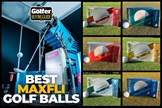 Best Maxfli golf balls 2025
Best Maxfli golf balls 2025
-
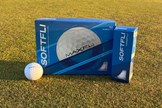 Maxfli SoftFli golf balls
Maxfli SoftFli golf balls
-
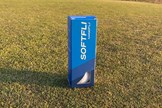 Maxfli SoftFli golf balls
Maxfli SoftFli golf balls
-
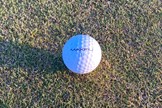 Maxfli SoftFli golf ball
Maxfli SoftFli golf ball
-
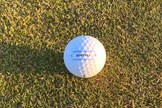 Maxfli SoftFli golf ball
Maxfli SoftFli golf ball
-
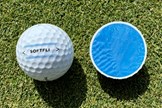 Maxfli SoftFli golf ball cut through
Maxfli SoftFli golf ball cut through
-
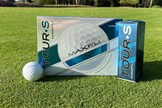 Maxfli Tour S golf balls
Maxfli Tour S golf balls
-
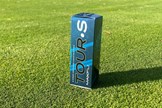 Maxfli Tour S golf balls
Maxfli Tour S golf balls
-
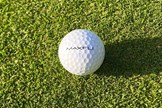 Maxfli Tour S golf ball
Maxfli Tour S golf ball
-
 Maxfli Tour S golf ball
Maxfli Tour S golf ball
-
 Maxfli Tour S golf ball cut through
Maxfli Tour S golf ball cut through
-
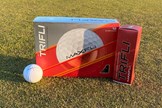 Maxfli TriFli golf balls
Maxfli TriFli golf balls
-
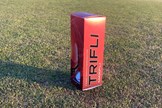 Maxfli TriFli golf balls
Maxfli TriFli golf balls
-
 Maxfli TriFli golf ball
Maxfli TriFli golf ball
-
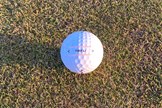 Maxfli TriFli golf ball
Maxfli TriFli golf ball
-
 Maxfli TriFli golf ball cut through
Maxfli TriFli golf ball cut through
